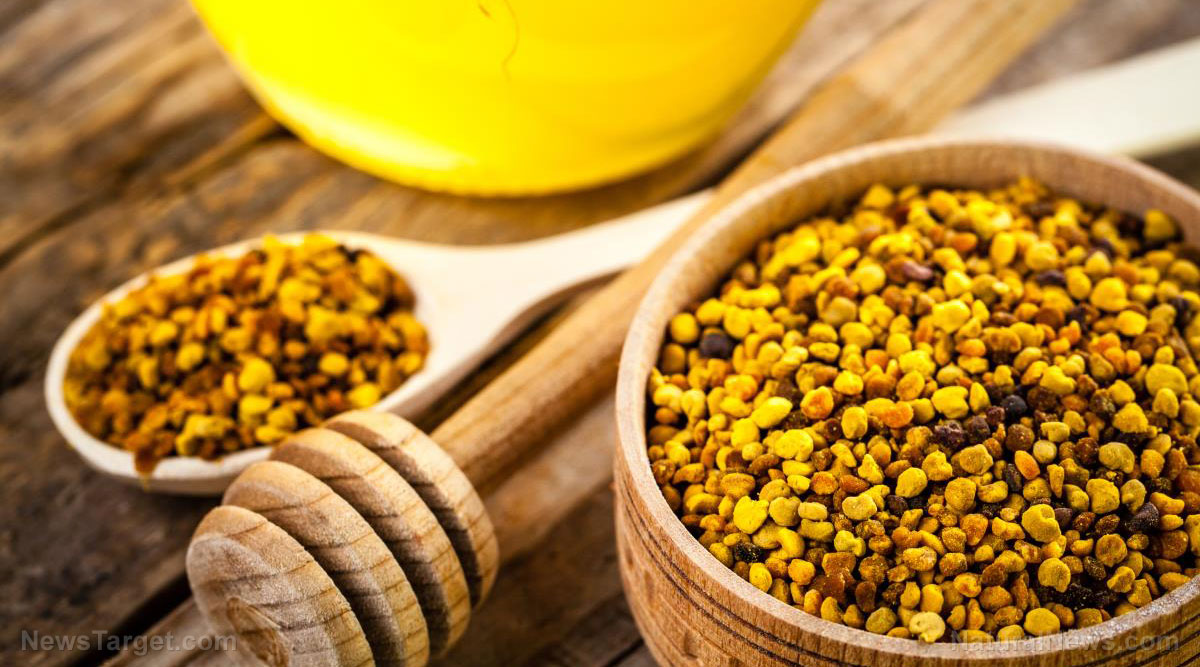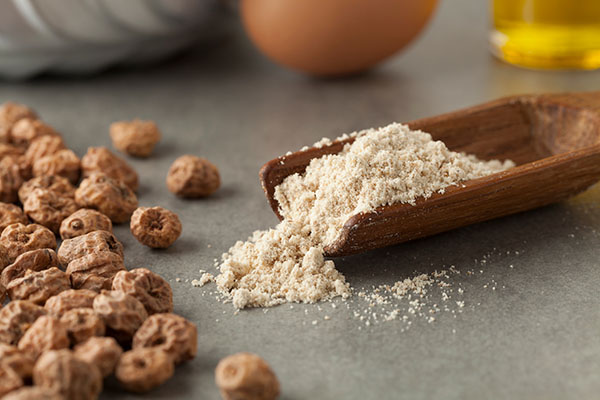
Advertisement
Honey bees are well-known not just for their valuable products, but also for being the best pollinators. According to the U.S. Forest Service, pollinators are responsible for assisting more than 80 percent of the flowering plants worldwide to reproduce.
Bees perform this important function while gathering food for their hive. While collecting nectar from flowers, pollen from the male reproductive organs of the plants they visit stick to the hairs on their bodies. The bees then spread these pollens around as they hop from one flower to another, enabling the pistils — the female reproductive organ — of various plants to become fertilized.
But honey bees also actively gather pollen for use as food. They bring pollen back to the beehive compacted into balls or pellets with a mixture of nectar and bee salivary enzymes. Inside the hive, these pellets, commonly known as bee pollen, are packed in honeycomb cells by flightless bees and covered with a bit of honey and wax to make beebread, the main food source of worker bees and bee larvae.
According to studies, bee bread serves as the basic protein source of the entire colony and is also the source of nutrients and minerals found in royal jelly. As the main ingredient of bee bread, bee pollen has been labeled a nutrient powerhouse and has recently gained traction among scientists and health buffs because of its outstanding health benefits.
So what can bee pollen do for our health? Read on and find out.
Bee pollen: production, composition and beneficial properties
Today, bee pollen is known as a potent source of vitamins, minerals, antioxidants and other important nutrients for humans. It is also considered a superfood and is marketed as a healthy addition to almost any type of food. But knowing the origin of bee pollen, you may be wondering how those little pellets sold in health food stores ended up in a bottle.
According to the magazine Bee Culture, beekeepers use devices called pollen traps to collect bee pollen from honey bees. These devices could be fitted over the entrance to a hive and contain small openings for returning forager bees to squeeze through. But these traps are designed in such a way that when bees do squeeze through them, the pollen they are carrying on their hind legs gets knocked off and falls straight into a collection drawer.
Fresh bee pollen, however, is highly perishable and needs to be collected daily and preserved immediately. Freezing fresh bee pollen seems to be the best way to not only retard the growth of molds but also to preserve the nutrients and beneficial properties of bee pollen. When preserving bee pollen through drying, experts recommend doing it in the dark at a temperature of about 30 C or 86 F. Sun drying is not a preferable option because it decreases the antioxidant content of bee pollen.
The use of bee pollen to support health is not something new. This nutritious superfood is a staple of apitherapy, a branch of alternative medicine that makes use of honey bee products to treat a variety of human ailments and symptoms, particularly pain. Several studies have attributed the medicinal properties of bee pollen to its abundance of bioactive compounds, which now total more than 200, according to the latest studies.
It is worth noting that the nutrient content of bee pollen varies based on season, geographical location and the type of pollen sources available to honey bees. Nevertheless, several reports have managed to give estimates of the amount of important nutrients and bioactive compounds present in bee pollen:
Macronutrients
- Protein, about 22.7 percent on average
- Essential amino acids (e.g., methionine, lysine, threonine, histidine, leucine, isoleucine, valine, phenylalanine and tryptophan), 10.4 percent
- Digestible carbohydrates, 30.8 percent
- Sugars (e.g., fructose and glucose), 25.7 percent
- Essential fatty acids (e.g., linoleic acid, y-linoleic acid), 0.4 percent
- Other lipids, 5.1 percent
- Plant sterols (e.g., p-sitosterol), 1.1 percent
Micronutrients
- Fat-soluble vitamins (e.g., provitamin A, vitamin E and vitamin D), 0.1 percent
- Water-soluble vitamins (e.g., vitamins B1, B2, B3, B5, B6, B9 and C, biotin, rutin and inositol), 0.6 percent
- Minerals (e.g., calcium, phosphorus, magnesium, sodium, potassium, iron, copper, zinc, manganese, silicon and selenium), 1.62 percent
- Phenolic compounds (e.g., flavonoids, leukotrienes, catechins and phenolic acids), 1.6 percent
Because of its impressive nutritional profile, bee pollen has a wide variety of health-promoting properties. These include cholesterol-lowering, blood-sugar-lowering, detoxifying, antioxidant, anti-inflammatory, antimicrobial, antiallergic and adaptogenic properties.
The health benefits of bee pollen
Bee pollen is described as a mixture of potent natural ingredients, which include flower pollen, nectar, bee enzymes, honey, wax and other bee secretions. A popular health food that’s been around for centuries, these tiny golden granules have a long history of use as natural medicine. The Federal Ministry of Health in Germany now recognizes bee pollen as a medicine.
Packed with nutrients and other active components, bee pollen has demonstrated its health benefits in a number of studies. Here are some of the good things researchers have discovered about bee pollen: (h/t to Healthline.com)
- It contains high amounts of antioxidants — According to cell culture, animal and human studies, bee pollen antioxidants (i.e., flavonoids, carotenoids, quercetin, kaempferol and glutathione) can help neutralize free radicals, reduce inflammation, fight infections and stop the growth of tumors.
- It can help reduce risk factors for heart disease — The antioxidants in bee pollen can prevent the oxidation of lipids, which causes them to clump together and increases the risk of clogged arteries. A study involving people with this health problem showed that bee pollen supplements can help decrease blood cholesterol levels and improve vision.
- It helps boost liver function — In animals, bee pollen can help increase the liver’s antioxidant defenses and improves its ability to eliminate waste. Bee pollen has also been found to promote liver regeneration.
- It can help reduce inflammation — Chronic inflammation has been linked to the development of life-threatening diseases. Fortunately, bee pollen is rich in anti-inflammatory components that are just as effective at reducing inflammation and swelling as nonsteroidal anti-inflammatory drugs (NSAIDs).
- It helps boost immunity — According to a study by Iranian researchers, bee products can boost immune responses in animals, especially the production of antibodies against certain viruses. Bee pollen also has antimicrobial properties that make it an effective natural antibiotic.
- It promotes wound healing — Because of the abundance of antioxidant and anti-inflammatory compounds in bee pollen, it can help treat burn wounds and accelerate wound healing. When applied topically (as an ingredient of balms), bee pollen’s antimicrobial properties can also help prevent wound infections.
- It can help relieve menopausal symptoms — According to German researchers, bee pollen is an effective natural remedy for menopausal symptoms. They reported that bee pollen supplementation greatly benefited breast cancer patients who were undergoing antihormonal treatments and were suffering from various complaints, such as hot flashes, hair loss, depression and sleep disturbances.
Bee pollen is a versatile superfood that can do a lot of great things for your health. Packed with essential micronutrients and bioactive components, bee pollen can help enhance your immune function, prevent diseases and boost your nutrient intake. Bee pollen is sold at health food stores as a nutritional supplement. It can be eaten on its own or sprinkled over cereals, yogurt, oatmeal or smoothies. To enjoy its many benefits, start adding nutritious bee pollen to your daily diet today.
Sources:
Advertisements







